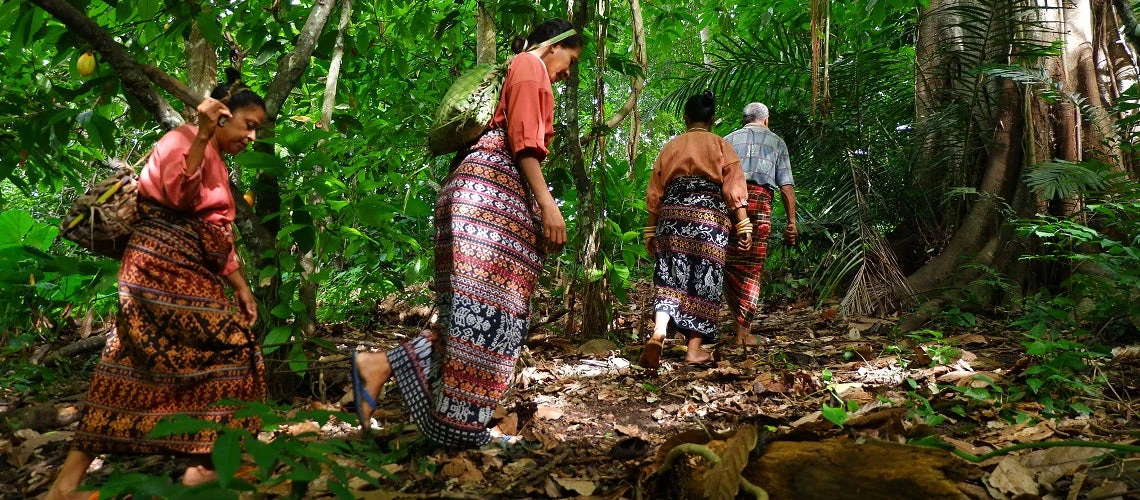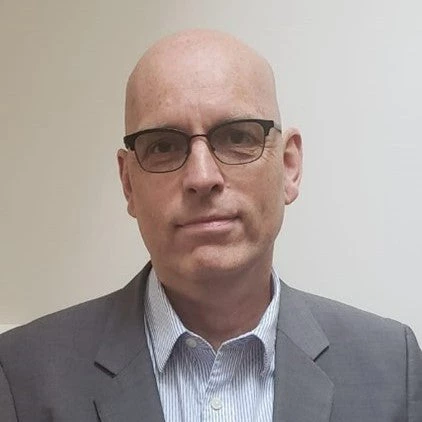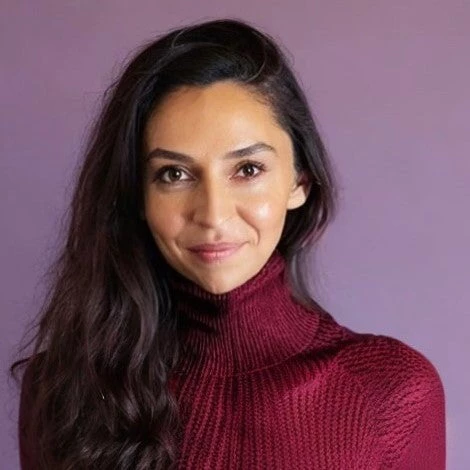 Women walking in the forest in Indonesia
Women walking in the forest in Indonesia
Forests are essential as a natural solution to climate change. They are also a source of livelihoods for Indigenous Peoples and Local Communities (IPLCs) who safeguard around 80% of the world’s biodiversity. To boost both forest protection and communities, a unique form of climate finance, the Dedicated Grant Mechanism or DGM, is empowering IPLCs to participate in and benefit from efforts to reduce emissions from deforestation and forest degradation (REDD+) and to lead sustainable forest-use practices.
DGM aims to tap into the potential and critical role of IPLC women by fostering women’s climate leadership and effective participation at local, national, and global levels. Women’s ability to influence decision-making around forestry management is inextricably linked to the particular contexts of the communities where these efforts take place. For IPLCs in particular, women represent powerful change agents in the larger fight against climate change through their unique implementation of local knowledge and practices.
"The Dedicated Grant Mechanism aims to tap into the potential and critical role of Indigenous Peoples and Local Communities women by fostering women’s climate leadership and effective participation at local, national, and global levels."
A new report, “Fostering Gender-Transformative Change in Sustainable Forest Management,” analyzes the nexus of gender equality, IPLCs, landscapes, and climate change by looking at a wide range of World Bank DGM projects, supported by the Climate Investment Funds (CIF). The innovative study showcases how these priority areas can come together and bring about transformative change towards low carbon, climate-resilient development that fosters gender equality. It offers guidance to REDD+ efforts and locally led climate finance delivery mechanisms.
The report provides a pathway toward an inclusive process for sharing knowledge that teams could benefit from as they work to integrate gender equity and climate action.
Here are a few key principles this study uncovered:
1. If gender is not considered from the very start, a project will fail to account for barriers to equality.
IPLC women face multiple and interconnected barriers that restrict their ability to effect change in their communities. These barriers are shaped by formal and informal institutions such as context-specific gender norms. Land tenure and access remains one of the most formidable impediments to gender equality in forestry. Collective land tenure systems should not simply assume gender inclusion but include proactive measures to achieve gender equality.
By carrying out inclusive and close engagement with stakeholders, the study found that if projects include clear gender assessments, dedicated gender resources and staffing, and action plans with targets, they are more likely to address these barriers and contribute to gender-transformative change. Country projects that had staff with gender expertise, provided targeted outreach and support to women, and had robust targets (greater than 30%) for women’s participation and direct benefit saw more obvious and positive changes in gender norms.
2. Innovative country-led approaches can provide steppingstones toward gender-transformative change.
DGM projects use strategies such as gender quotas and tailored outreach mechanisms to support women’s climate leadership and participation in decision-making and equal benefit-sharing from sustainable forest management at the national and community levels.
For example, in Burkina Faso, 60% of our DGM project beneficiaries are women (78,130 women out of 130,219 total) and 43 of 53 livelihoods-focused subprojects are implemented exclusively by women (81%). In Ghana, 64 of 152 individual grants are women-led (42%) and 34% of those are migrant women. In Mexico, 85% of community initiatives are women-led and 87% of beneficiaries of project financing dedicated to social inclusion are women.
DGM’s success in enhancing women’s voice and agency through its governance mechanisms has also started to shift community-level gender norms. In Ghana, for example, both female and male community members describe how women have a greater voice and influence at the household and community levels.
The ascension of women to leadership positions in DGM’s governance bodies is also an indication of changing community norms. As of 2021, 35% of the voting members of the global governing body of DGM are women; up to 45% of DGM’s national governing bodies – i.e., the National Steering Committees (NSCs) – are women in some countries, while on average 25% of all NSC members are women.
"As of 2021, 35% of the voting members of the global governing body of DGM are women; up to 45% of DGM’s national governing bodies – i.e., the National Steering Committees (NSCs) – are women in some countries, while on average 25% of all NSC members are women."
3. The lack of formal gender-sensitive performance indicators restricts wider capture and reporting of gender impact at the global level.
The report shows that there are relatively few gender indicators, and variation in reporting across DGM countries making portfolio-level tracking and comparison challenging. Hence, the lesson is that despite efforts by the World Bank project teams and others, an opportunity has been missed to translate gender-transformative objectives into systematic and meaningful accountability.
4. Women’s leadership journeys are different, and more women leaders are needed.
DGM’s focus on improving women’s leadership, particularly through NSC membership and subprojects, provided a space for women to engage within the particular country context. However, simply emphasizing women’s leadership is not sufficient to ensure that more marginalized women are included. Efforts to increase women’s role in leadership must consider the varied and nuanced experiences of different women, including factors such as indigenous identity, migration status, age and education level.
The study also highlights the need for more experienced and skilled women leaders and suggests that the DGM should prioritize capacity building for emerging diverse women leaders so that when the next leadership opportunity arises, there is a prepared cohort.
Gender-transformative change is a non-linear, long, and complex process involving individual, collective, and systematic change. The DGM experience indicates potential pathways to make transformation happen for women as well as for our forests and the planet.
The findings of the study can be accessed both through the full report and case studies on Ghana, Indonesia, Peru, and NSC.




Join the Conversation